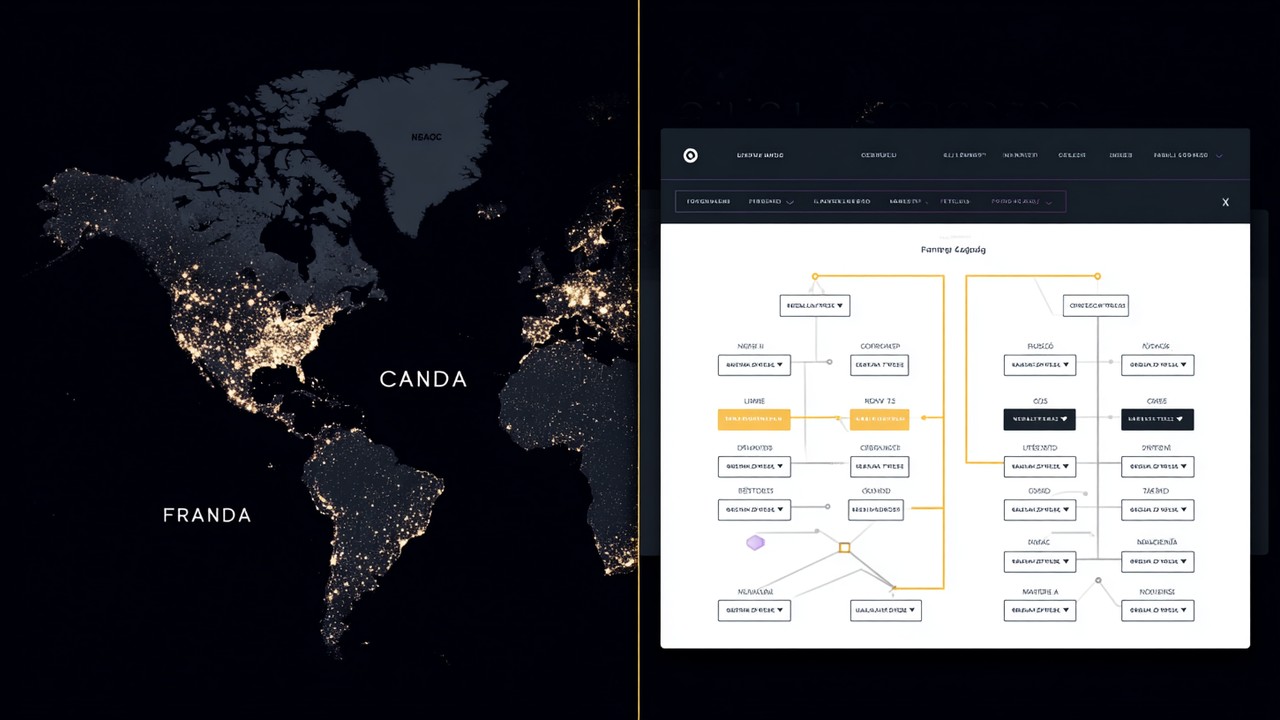Expanding a website’s reach across borders requires more than just translating content—it demands a nuanced approach to how search engines and users perceive your site. The strategic choice between country targeting and language targeting can dramatically influence your international SEO success, shaping not only your visibility in search results but also the overall user experience. Understanding these two critical concepts is essential for businesses aiming to thrive in the global digital marketplace.
Understanding Country Targeting and Language Targeting in SEO
Country targeting, often referred to as geo-targeting, is a fundamental SEO strategy designed to optimize a website’s presence for users in a specific country or region. This approach signals to search engines that your content is intended primarily for audiences in a particular geographical location. For example, a website with a .fr domain signals to Google and other search engines that it is targeting users in France. This method is invaluable for businesses that want to capture local market share by appearing prominently in country-specific search engine results pages (SERPs).
In contrast, language targeting focuses on delivering content tailored to users based on their preferred language, regardless of their country. This approach is crucial for reaching multilingual audiences, especially when the same language is spoken across multiple countries. For instance, a Spanish-language website might target users in Spain, Mexico, and other Latin American countries. Language targeting often involves implementing hreflang tags—HTML attributes that help search engines serve the correct language or regional dialect version of a page to users. This ensures that a French speaker in Canada sees the appropriate Canadian French content instead of the version intended for France.
These two targeting methods serve distinct but complementary roles in international SEO and regional SEO strategies. While country targeting ensures your site gains prominence in specific national markets, language targeting enhances accessibility and relevance for diverse linguistic groups. Together, they form the backbone of a robust multilingual SEO approach that respects both geographic and cultural diversity.
Understanding and correctly implementing geo-targeting and language targeting is essential for businesses looking to expand internationally. The absence of clear signals can confuse search engines, resulting in poor indexing, lower rankings, or even the wrong language version being shown to users. For example, failing to use hreflang tags on a multilingual website can cause duplicate content issues, diluting SEO value and harming user engagement.
In today’s globalized economy, where users expect personalized, localized experiences, applying these targeting strategies effectively is more important than ever. Modern tools like Google Search Console provide features that enable webmasters to specify country targets, while careful use of hreflang tags and URL structures supports accurate language targeting. Moreover, advanced hosting and delivery platforms such as Globaliser revolutionize international SEO by combining serverless WordPress environments with a push-based full-site CDN. This technology ensures that localized content is served swiftly and reliably from edge locations worldwide, eliminating latency and improving Core Web Vitals—a critical ranking factor.
In summary, geo-targeting and language targeting are not mutually exclusive but rather complementary strategies that, when combined thoughtfully, can amplify your global SEO performance and user satisfaction. Grasping the distinctions and applications of these concepts lays the foundation for successful international digital marketing and paves the way for adopting innovative solutions that enhance scalability and speed on a global scale.
How Country Targeting Influences Search Engine Rankings and User Experience
Search engines rely on multiple signals to accurately determine a website’s intended country audience, which directly affects search rankings and visibility in local SERPs. One of the most prominent indicators is the use of country code top-level domains (ccTLDs) such as .de for Germany or .co.uk for the United Kingdom. These ccTLDs serve as strong geo-targeting signals, unequivocally telling search engines that the site is designed for users in that particular country. Besides ccTLDs, server location plays a role; hosting a website’s servers within the target country can enhance local relevance, although this signal is less decisive than domain or Search Console settings.
Another critical tool for country targeting is the Google Search Console’s geographic targeting setting, which allows webmasters to specify the country to which their site or subdirectory is targeted. Proper configuration here helps Google better understand your intended audience, especially for generic top-level domains (gTLDs) like .com that lack inherent country association. For example, a .com domain hosted on US servers but targeted at users in Australia can be configured accordingly via Search Console to improve visibility in Australian search results.
The impact of country-specific targeting on SEO manifests in improved local search rankings and enhanced SERP visibility for users within the target region. This is particularly crucial for businesses competing in saturated markets where localized SEO offers a competitive edge. By signaling geo-targeting effectively, sites can appear in local packs, maps, and country-specific search features, driving higher-quality traffic and conversions.
Beyond rankings, country targeting significantly enhances the user experience by enabling websites to present localized content that resonates culturally and linguistically with the audience. This includes adjusting currency displays to local denominations, offering region-specific promotions, and aligning with local legal and regulatory requirements such as GDPR compliance in Europe or CCPA in California. For instance, an e-commerce site targeting Japan will benefit from showing prices in yen, using cultural references familiar to Japanese consumers, and ensuring data privacy disclosures meet local laws.
Consider the example of an international fashion retailer using ccTLDs for country-specific sites: example.fr for France, example.it for Italy, and example.jp for Japan. Each site features localized product assortments, payment options, and customer support channels. This country-targeted approach helps these sites rank higher in their respective local SERPs and delivers a seamless shopping experience tailored to each audience's expectations. The result is increased user engagement, lower bounce rates, and higher conversion rates.

However, country targeting is not without challenges. Relying solely on ccTLDs can increase management complexity, requiring separate SEO efforts for each domain. This is where modern solutions like Globaliser offer compelling advantages. By leveraging a serverless WordPress environment combined with a push-based CDN that caches and delivers entire sites—including dynamic HTML—at the edge, Globaliser enables rapid, globally distributed country targeting without the overhead of managing multiple physical servers or domains. Its use of Anycast DNS ensures users are routed to the closest data center, reducing latency and improving Core Web Vitals, which positively affects rankings.
In conclusion, country targeting influences SEO by providing strong geographic signals to search engines and enhancing localized user experiences. Employing ccTLDs, configuring Google Search Console settings, and hosting considerations form the backbone of this strategy. When paired with modern global delivery platforms such as Globaliser, businesses can overcome traditional limitations, achieving fast, reliable, and regionally optimized web presence that drives superior SEO outcomes.
The Role of Language Targeting in Reaching Multilingual Audiences Effectively
Language targeting is a cornerstone of multilingual SEO, enabling websites to serve content in the preferred languages of diverse users. Unlike country targeting, which focuses on geographical signals, language targeting emphasizes linguistic relevance and cultural nuances, ensuring that users receive information that feels natural and accessible. This approach is particularly vital for global brands operating in markets where multiple languages or dialects coexist, or where the same language is spoken across different countries with regional variations.
A key technical element that supports language targeting is the implementation of hreflang tags. These HTML attributes tell search engines exactly which language and regional version of a page to display to users based on their language preferences and location. For instance, a site targeting English speakers in the United States (en-US) and the United Kingdom (en-GB) can use hreflang tags to differentiate content versions, preventing search engines from treating these as duplicate content and improving user satisfaction by delivering the most relevant variant. Correct use of hreflang tags not only boosts SEO by clarifying content intent but also enhances user engagement by reducing bounce rates caused by language mismatches.
Despite its benefits, language targeting presents several challenges. Translation quality is paramount; poorly translated content can harm brand reputation and reduce trust. Automated translations, while convenient, often fail to capture cultural subtleties and idiomatic expressions, which can alienate native speakers. Therefore, investing in professional localization is essential to maintain authenticity and relevance.
Another common issue is duplicate content, which arises when multiple language versions of a page are too similar or not properly distinguished with hreflang tags. Search engines may penalize such duplication, diluting ranking potential. Moreover, understanding user intent variations across languages is critical. Search queries in one language may differ in intent or phrasing from another, requiring tailored keyword research and content strategies for each language to maximize SEO impact.
Successful multilingual websites often combine meticulous language targeting with advanced technical SEO. For example, global giants like Airbnb and IKEA deploy comprehensive hreflang implementations alongside localized content strategies to cater to millions of users worldwide. Their websites feature region-specific URLs with subdirectories or subdomains structured by language and country, ensuring clarity for both users and search engines.

Incorporating a modern infrastructure like Globaliser further enhances language targeting effectiveness. Its serverless WordPress platform and push-based full-site CDN ensure that all language versions are served rapidly from edge servers closest to users, eliminating latency that can frustrate international visitors. This is especially important for dynamic, content-rich sites where traditional CDNs, which primarily cache static assets, fall short. Globaliser’s approach guarantees consistent low TTFB and excellent Core Web Vitals scores across all language variants, supporting superior SEO performance.
In summary, language targeting is indispensable for engaging multilingual audiences and boosting international SEO. Through precise hreflang implementation, professional localization, and understanding of user intent, websites can present the right content to the right users. When combined with cutting-edge delivery platforms like Globaliser, language-targeted content achieves both relevance and speed, two pillars of modern global SEO success.
Comparing the SEO Benefits and Limitations of Country vs. Language Targeting
Choosing between country targeting and language targeting—or deciding how to combine them—depends heavily on your business goals, audience composition, and market characteristics. Both strategies offer distinct SEO benefits but also come with limitations that must be carefully weighed to maximize global search performance.
When to Prioritize Country Targeting
Country targeting is most effective when your primary goal is to capture geographically defined markets where location-specific factors strongly influence search intent and user behavior. For example, businesses selling products that require local compliance, currency transactions, or region-specific promotions benefit from country targeting. This strategy ensures your site ranks well in local search results by aligning with country-specific preferences and regulations.
Using ccTLDs or configuring Google Search Console’s country targeting settings can deliver clear signals to search engines, boosting visibility in those markets. Moreover, localized content resonates deeply with users, improving engagement and conversion. For instance, a travel agency targeting Canadian users will gain more traction with a .ca domain, content featuring Canadian destinations, and pricing in CAD.
However, country targeting can be restrictive if your audience spans multiple countries sharing the same language. Managing multiple ccTLDs or country-specific sites increases operational overhead and may fragment SEO efforts without coordinated strategies.
When Language Targeting Takes Precedence
Language targeting shines when your audience is linguistically diverse but not necessarily confined to one country. For example, a Spanish-speaking business targeting users in Spain, Mexico, Argentina, and the U.S. Hispanic community will benefit from language targeting using hreflang tags to serve regionally adapted Spanish content.
This enables you to consolidate SEO authority under fewer domains or subdomains while respecting linguistic and cultural nuances. It also helps avoid duplicate content penalties by signaling to search engines which language or dialect version to serve.
The main limitation here is that language targeting alone might not suffice if local regulations, currency, or cultural factors vary significantly across countries speaking the same language. Additionally, improper hreflang implementation can cause indexing confusion, diluting SEO results.
Combining Country and Language Targeting for Maximum Impact
For many international websites, the optimal approach involves a combination of both country and language targeting. This dual strategy allows businesses to tailor content both geographically and linguistically, maximizing relevance and search visibility.
For example, a global brand might use ccTLDs or country-specific subdirectories to target countries like France, Canada, and Belgium, while deploying hreflang tags within those sites to serve French-speaking audiences in each country with localized dialects or expressions. This ensures Google can differentiate content by both country and language, reducing duplicate content issues and improving user experience.

Limitations of Solely Relying on One Strategy
Relying exclusively on either country or language targeting can create SEO blind spots:
- Country-only targeting risks alienating linguistic minorities or visitors who prefer content in different languages within the same country.
- Language-only targeting may cause missed opportunities for local search dominance and fail to address country-specific legal or cultural requirements.
Case Studies and Data Insights
Real-world data consistently show that websites combining country and language targeting outperform those using only one method. For example, e-commerce sites that implemented hreflang tags alongside country-targeted domains typically saw a 15-30% increase in organic traffic and improved rankings in both local and language-specific SERPs.
In one case, a multinational retailer expanded from a .com site serving English globally to country-specific domains with hreflang tags for multiple languages. They observed reduced bounce rates by 25% and a notable boost in conversions due to better localized user experiences and faster load times enabled by a global full-site CDN.
This is where Globaliser’s next-generation platform provides a competitive edge. Unlike traditional CDNs that struggle with dynamic content and multiple language versions, Globaliser’s push-based full-site caching replicates entire sites—including localized HTML—across edge servers worldwide. This infrastructure supports complex country and language targeting strategies without compromising site speed or scalability.
Its serverless WordPress environment simplifies managing multiple site versions by centralizing content updates and automating global propagation. Combined with Anycast DNS routing, Globaliser delivers fast, reliable access tailored to users’ country and language, enhancing both SEO rankings and user satisfaction.
In conclusion, the choice between country and language targeting is not an either/or decision. Businesses aiming for maximum international SEO impact must analyze their audience profiles and market needs, then adopt a thoughtful blend of both strategies. Leveraging advanced platforms like Globaliser enables seamless implementation and scaling of complex geo-linguistic SEO architectures, ensuring consistent high performance and global reach.
Best Practices for Implementing Country and Language Targeting in Your SEO Strategy
Effectively implementing country and language targeting requires a strategic approach that blends technical precision with thoughtful content localization. Following best practices ensures that your website communicates clear signals to search engines while delivering a tailored user experience that boosts engagement and rankings.
Setting Up Country Targeting: Step-by-Step
Choose the Right Domain Strategy
The domain structure plays a pivotal role in geo-targeting. Options include:- Country Code Top-Level Domains (ccTLDs): Using extensions like
.deor.frprovides the strongest country signal but requires managing separate domains. - Subdirectories: Structures such as
example.com/fr/are easier to manage and consolidate SEO authority but provide slightly weaker geo-targeting signals. - Subdomains: Like
fr.example.com, subdomains offer a middle ground, but their effectiveness depends on search engine interpretation and proper configuration.
- Country Code Top-Level Domains (ccTLDs): Using extensions like
Configure Geographic Targeting in Google Search Console
For websites using generic top-level domains (gTLDs) or subdirectories/subdomains, Google Search Console allows you to specify a target country. This setting helps Google serve your site in the appropriate local search results and avoid confusion.Host Servers Strategically
While less critical than before, hosting your website on servers located within or near your target country can contribute to faster load times and provide secondary geo-signals to search engines. However, leveraging modern global delivery platforms such as Globaliser can eliminate the need for multiple data centers by caching and serving content from edge locations worldwide, ensuring low latency regardless of the user’s location.Localize Content Beyond Language
Country targeting isn’t only about domain and server location. It requires adapting content to local cultural preferences, legal requirements, currency formats, and even payment methods. This holistic localization enhances user trust and relevance.
Best Practices for Language Targeting
Implement Hreflang Tags Correctly
Proper hreflang implementation is crucial for signaling language and regional dialect targeting. These tags must be:- Placed in the
<head>section of each relevant page or delivered via HTTP headers or XML sitemaps. - Reciprocal: each page referencing others with hreflang should also be referenced back.
- Comprehensive: covering all language and regional variants, including a default fallback (
x-default) for users whose language is not explicitly targeted.
- Placed in the
Use Clear URL Structures
Language targeting benefits from consistent and descriptive URL formats, such as:- Subdirectories:
example.com/en/orexample.com/es-mx/ - Subdomains:
en.example.comores-mx.example.com - Parameters can be used but are less SEO-friendly.
- Subdirectories:
Prioritize High-Quality Localization
Translate content with professional localization services rather than relying solely on automated tools. This ensures cultural nuance, idiomatic accuracy, and alignment with user expectations, avoiding pitfalls like awkward phrasing or cultural insensitivity.Avoid Duplicate Content Issues
Without hreflang tags or proper canonicalization, multiple language versions can appear as duplicates to search engines. Use hreflang to differentiate pages and canonical tags to manage content authority correctly.
Common Pitfalls and How to Avoid Them
Incorrect Hreflang Implementation
Mistakes here can confuse search engines, leading to ranking drops or wrong language versions being shown. Use tools like Google Search Console’s International Targeting report to detect errors.Mixed Signals Between Country and Language Targeting
Avoid conflicting geo-targeting signals such as a.comdomain targeted to multiple countries without clear differentiation or inconsistent hreflang tags. Clear, coordinated targeting strategies prevent confusion.Ignoring Technical SEO Fundamentals
Fast site speed, mobile optimization, and crawlability remain essential. Platforms like Globaliser help by offering a push-based full-site CDN that caches both static and dynamic content at global edge locations, ensuring lightning-fast delivery for all language and country versions without worrying about origin server bottlenecks.
Tools and Resources to Monitor Targeting Effectiveness
Google Search Console
Its International Targeting report allows you to monitor hreflang errors and country targeting settings, providing actionable insights.SEMrush and Ahrefs
These comprehensive SEO suites offer audits that detect hreflang mistakes, crawl issues, and geo-targeting problems, alongside competitor analysis in international contexts.Screaming Frog SEO Spider
Useful for crawling large websites to verify hreflang tags, URL structures, and canonicalization.Globaliser Platform
Beyond SEO monitoring, Globaliser optimizes your site’s global performance by delivering content from edge servers worldwide. Its serverless WordPress environment simplifies managing multilingual content and country-specific versions while ensuring consistently low latency—a key factor in today’s Core Web Vitals-focused SEO landscape.
By following these best practices, businesses can implement robust country and language targeting strategies that not only enhance search engine rankings but also provide localized, engaging user experiences worldwide. Combining technical precision with cultural sensitivity—and leveraging modern infrastructure like Globaliser—creates a scalable foundation for sustainable international SEO success.









